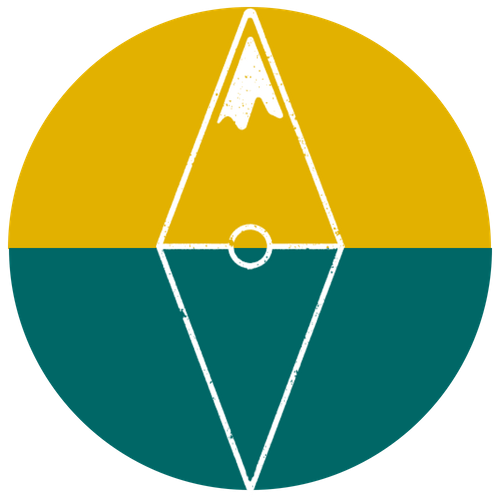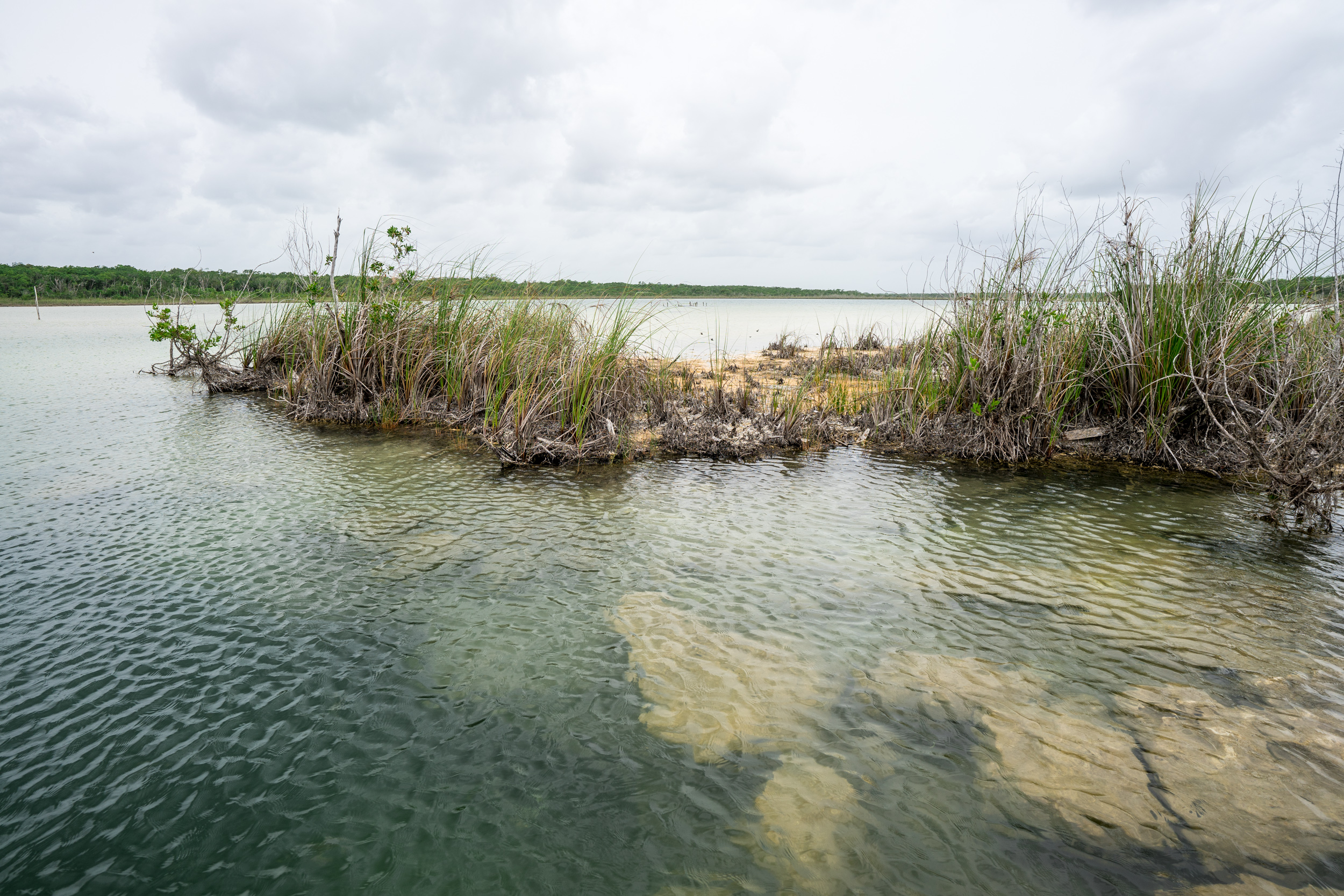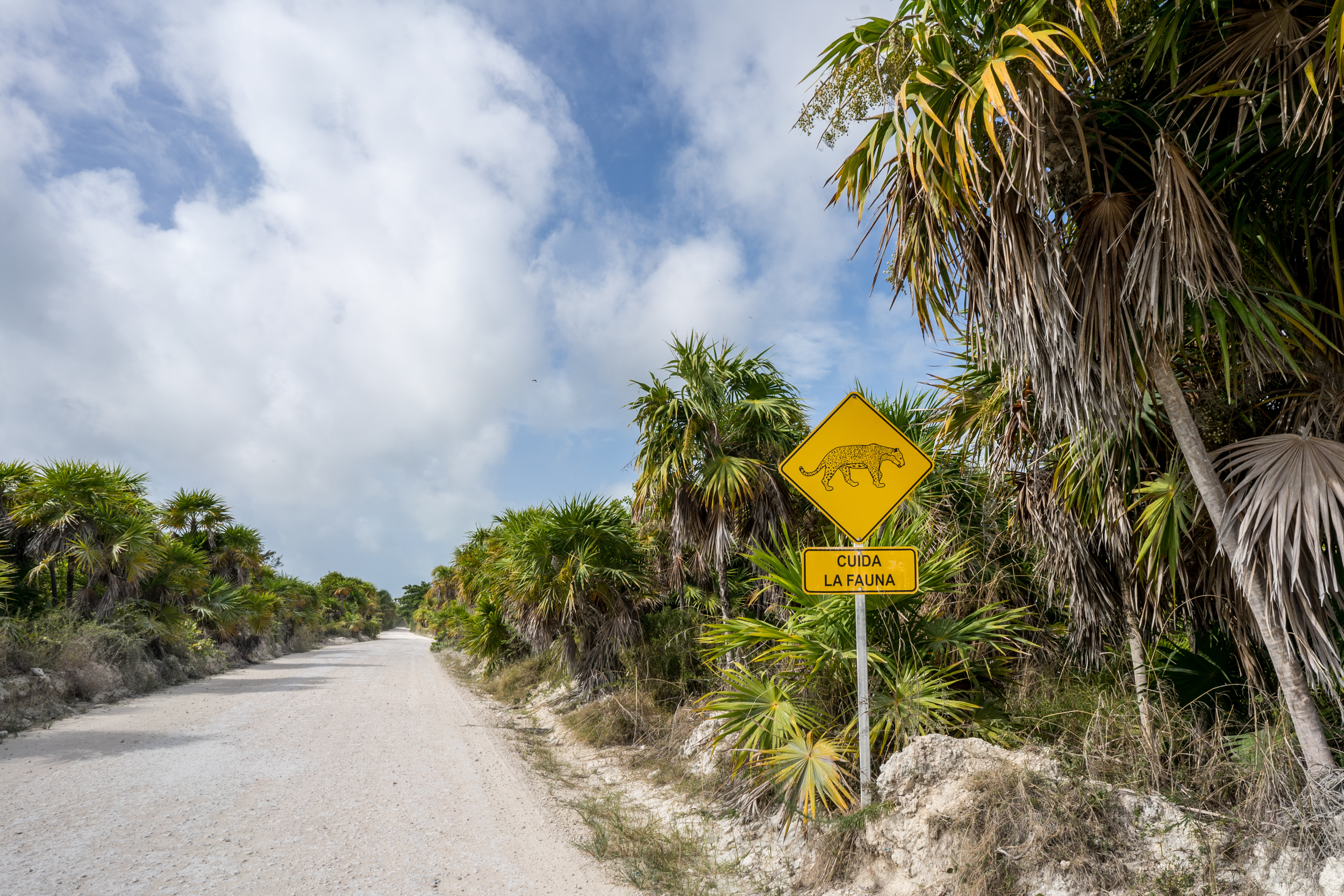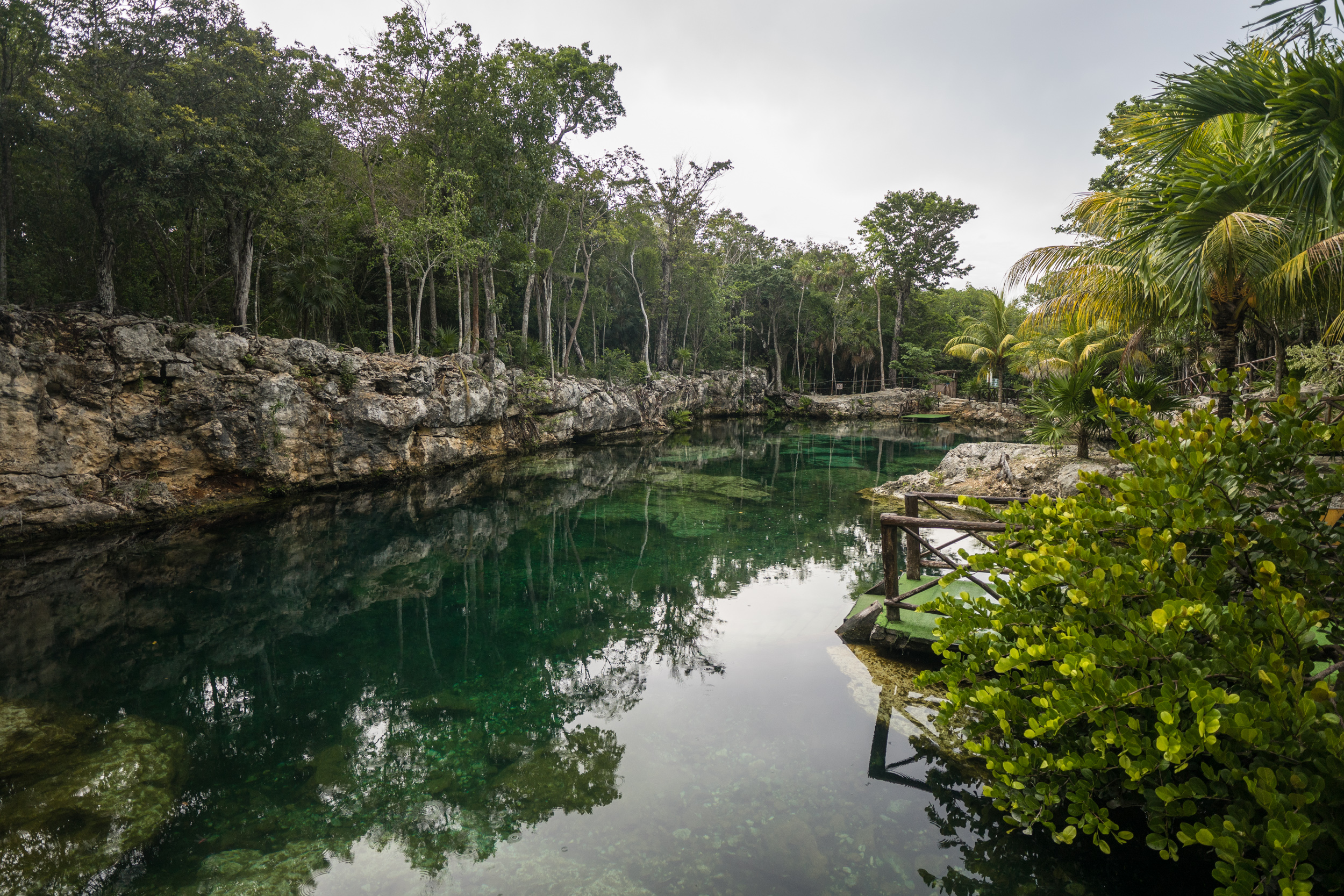IN CANCUN’S BACKYARD: Discovering Maya Ka’an (Part II)
Text: Andreea Lotak; Photos: Andreea & Justin Lotak · 7 min read
Síihil Noh Há Lagoon and ecotourism center in the Maya Ka’an destination, Quintana Roo, Mexico
The protection of nature is intricately connected with the protection of the Mayan identities within the authentic Maya Ka’an destination. With shared ownership rights over the land and jungles, the village cooperatives are aware of the power that their decisions have in dictating the fate of the natural ecosystems when it comes to economic development. The path that they have embraced is worthy of the slogan that Maya Ka’an as a brand uses: a place “where one can feel the earth’s heartbeats”. Visiting this place was important for our Conservation Atlas project because it is an excellent example of traditional community empowerment through a sustainable economy created by ecotourism. Even better is the honest dedication that runs deep in these people’s traditions to actually conserve and respect nature and offer a truly “eco” experience, while at the same time opening the door to their mayan traditions to be shared with visitors.
We had gotten an introduction to Maya Ka’an from Gonzalo Merediz Alonso, Executive Director of the Amigos de Sian Ka’an organization (read here). They are the initiators and promoters of this relatively new brand destination. According to Mr. Merediz Alonso, working to empower community tourism in the Maya Ka’an was the best way to protect a wildlife corridor toward the center of the Yucatán peninsula, while offering the local people economic opportunities. After the visit at the main office of Amigos de Sian Ka’an in Cancun we started our trip to discover the beautiful Maya Ka’an.
HANGING SNAKES & THOUSANDS OF BATS
Leaving the coast behind we headed into the heart of Quintana Roo. After spending one night in Valladolid, a beautiful town with old colonial architecture and a vibe that defined the Mexico of my childhood’s “telenovelas” (Mexican soap operas), we went south towards Maya Ka’an. Beforehand we had gotten in contact with Zendy Euan, coordinator of this community tourism network who arranged an itinerary for us and booked some of the activities we were going to experience.
Just a hint of what was hiding in the ceiling. These blind boas can reach up to four feet in length.
The first activity was a visit to the village of Kantemó. We arrived here as the evening was starting to set. Our guides from Centro Eco Turístico Beej Ka´ax Ha, part of the community tourism network in Maya Ka’an, were waiting for us. We were going to take bikes for a short ride through the selva outside the village and get to the entrance of a cave after sunset. As the light faded, at first tens, then hundreds and finally thousands of bats started pouring out of the cave. This was the cue that we had been waiting for. It was time to head inside and witness a spectacular phenomenon: an endemic species of boa snakes inhabits the nooks of the cave’s ceiling and they, too, were getting active. The snakes hang down, still, waiting for a bat to pass a little too close to them in order to catch and slowly consume it. That’s how the cave got its name, “La Cueva de las Serpientes Colgantes” - The Cave of the Hanging Snakes. The air inside was suffocating, while the wings of the hundreds of bats passing by our heads were creating a bit of a breeze. As we started crawling through the narrow tunnels of the cave to reach the chambers where the snakes are typically seen, we're thinking with humor that describing this experience to someone sounds like walking them through a nightmare. In realty it is nothing short of extraordinary. Our guides were sure of every step and very careful toward both us and this unique environment. A cave like this with its hanging snakes are one of a kind: no other such documented place exists in Mexico and very few are known around the world. The villagers in Kantemó are aware and respect the cave and its biodiversity.
Although we didn’t see any snake getting lucky, watching them hang unmoved from the ceilings was an impressive enough sight. The whole time we were in this cave we felt like witnessing the ultimate wildlife documentary happening before our eyes. After an hour in the cave we returned to the village and continued the itinerary through Maya Ka’an. Had we opted to spend the night in Kantemó, the adventure could have continued with a night tour by boat to the nearby lagoon to watch crocodiles.
LOOKING FOR BIRDS AND THE OPEN CENOTE IN THE HEART OF THE JUNGLE
Instead we kept heading south to get to Síihil Noh Há, an ecotourism center within a nature reserve under the shared ownership of the local community. Here we were going to do a walking tour through the forest for birdwatching and kayaking on the lagoon to an open air cenote. Our guide was Zendy herself, who arrived at 6:00 am ready to show us around. Zendy took pride in the true dedication to sustainability and authenticity that all these communities had. Síihil Noh Há offered accommodation in basic huts which cost little over $12/night. Organic soap made by a local artisan cooperative was used in the bathroom, the water system recycled waste water and used it for the organic garden, the restaurant used local produce, and the mayan community owning this large piece of land were stewards of conservation by preserving and in certain areas restoring the selva ecosystem.
plain chacalaca (Ortalis vetula)
A curious plain chacalaca looking at us from above. This bird species can be seen from Texas to Costa Rica. They are loud and don't shy away from humans.
Zendy lives in the nearby town of Felipe Carillo Puerto. She coordinates all the activities in this young brand destination and helps booking experiences for visitors, but the cooperatives and villages had long been working together to find ways for assuring economic development without hurting nature. Sustainable tourism is a key component of the local economy, but as Zendy said, the people here really want it to be authentic and truly sustainable. After the walking tour where we spotted some of the iconic birds living in the selva we had the chance to meet various of the guides working in Síihil Noh Há. One of them had brought a group of local school kids and teenagers to learn about birdwatching and about the fauna and flora. We encountered them on the trail as we were doing our tour with Zendy and thought it was amazing to see a large group of kids, mainly boys, being so quiet. We didn’t know they were on the trail pretty much until we crossed paths. The passion of the guides for their land and biodiversity was contagious.
Before heading out for our kayaking tour, we sat down in the restaurant with Zendy and another local guide and talked to them at large about the challenges and vision of the people working in the Maya Ka’an area (unofficially, they mostly refer to it as the Maya Zone). Both of them talked about the young generation that is drawn to work in resorts and come back ignoring the mayan traditions and language, but also about those who have embraced the work in their own communities, guiding visitors or doing conservation work. Zendy’s daughter who was only in sixth grade, already knew the names of all the bird species in the area in French, English, Spanish and Maya and wanted to be a guide. At first she had told her parents that her dream was to move to Paris, but now she had grown interested in her mother’s work and started guiding nature trips with her school. Sitting at the table with these two wonderful ladies working in their community was inspirational, as they both took pride in their identities and also worked directly to preserve them.
After the kayaking tour and a dip in the clear, blue water of the cenote, we were happy to have met Zendy and the rest of the people in the Maya Ka’an and ready to continue the trip to Tulum. From there we were going to access the Sian Ka’an Biosphere Reserve, the largest protected area in Mexico’s Caribbean.
A DAY IN THE SIAN KA’AN BIOSPHERE RESERVE
Tulum is the most touristy destination bordering the Maya Ka’an, attracting mostly visitors interested in the boutique hotels lining its beaches and the excellent restaurant and bar scene, but also those who want to experience the nature of Mexico’s Caribbean region. It was our basecamp for a day-trip into the Sian Ka’an Biosphere Reserve, whose northern entrance gate is at the end of the main hotel and restaurant strip of Tulum.
This reserve created in 1986 spreads across 652,000 ha/1.3 million acres, making it one of Mexico’s largest protected coastal areas. Hundreds of species of flora and fauna call this place home, with manatees seen among the mangroves and jaguars roaming its remote, inaccessible south side. As we drove in we noticed that almost all the way to the settlement of Punta Allen there were private houses and boutique hotels on the beach. The biosphere reserve designation is the highest conservation status in Mexico. People continue to live within reserves and sustainable plans for resource management are created. Only the residents can benefit from the reserve’s resources or from tourist activity and can build tourism accommodations. Even the private tour operators in towns like Tulum who offer excursions to the reserve have to work with local guides and cooperatives and cannot independently lead their trips.
“Wildlife is not that easy to spot”, had told us Mr. Merediz Alonso during our meeting. “The density of wildlife compared to the land mass doesn’t guarantee the easiest encounters.” Although the area’s biodiversity is stunning, the undeveloped lands that it inhabits allows species enough space to roam without getting close to human settlements or to trails and roads. The only species for which this didn’t apply were a type of iguana lizards, basking in the sun at every step. During our visit to the reserve we did get to spot a variety of song birds and woodpeckers, but indeed it wasn’t the easiest wildlife watching trip. However, the beauty of the place itself is worth the visit. In the Punta Allen village we had time to grab a meal and swim for a bit, after which we headed back to Tulum. For people spending the night in Punta Allen, there are kayaking tours operated by a cooperative of local women as part of the Maya Ka’an offer.
One of the most obvious attractions while being in Quintana Roo, aside from the Mayan ruins, are the privately owned cenotes. Tulum is surrounded by them, some within the Maya Ka’an, and with many seeing thousands of visitors per month. As the cenotes communicate through complex underground river systems and form the aquifer of the Yucatan peninsula, a lot more care than is given should be implemented. Some promote responsible practices like organic insect repellent and suntan lotion, but others don’t. We visited one cenote that was recommended to us as a more responsible, much less visited place. The abundance of birds, the large preserved forests and the deep blue bodies of waters made up for an amazing experience, but for sustainability’s sake we wouldn’t recommend going to more than one or two cenotes while in the region to reduce impact on the aquifer. Honestly, we don’t know where we stand in regards to the cenotes, because they are an unforgettable sight and a source of income for locals, while at the same time being so fragile and interconnected. At least try to find the least commercial ones that don’t have parking lots the size of a town and haven’t been heavily commercialized. There are plenty of remote cenotes ran by communities of mayan descent or by cooperatives of women in villages in the center of Quintana Roo.
Black iguanas (Ctenosaura similis)
One of the many black iguanas spotted in the Sian Ka'an Biosphere Reserve. Although they appear lazy, they were recorded as the fastest-running species of lizard.
***
All in all Maya Ka’an didn’t disappoint. What was hard was to choose from the experiences offered just the ones for which we had time. There are villages where travelers can meet and talk to the Mayan elders who are expert storytellers from the old times, visit a traditional “spa”, see ancient trees in other reserves, learn about the history of producing chewing gum and the traditional crafts, or kayak on rivers and lagoons. Whichever experience one chooses, it is excellent to be able to contribute to the preservation of nature and cultural identities while getting to know a unique and beautiful place.
















The Sian Ka'an Biosphere Reserve and UNESCO World Heritage Site, and the neighboring Maya Ka'an region more to the interior of the Yucatan Peninsula offer a different kind of tourism, compared to many of the populated coastlines. The photos below were taken during a week of visiting Maya Ka'an and the Sian Ka'an Biosphere Reserve.